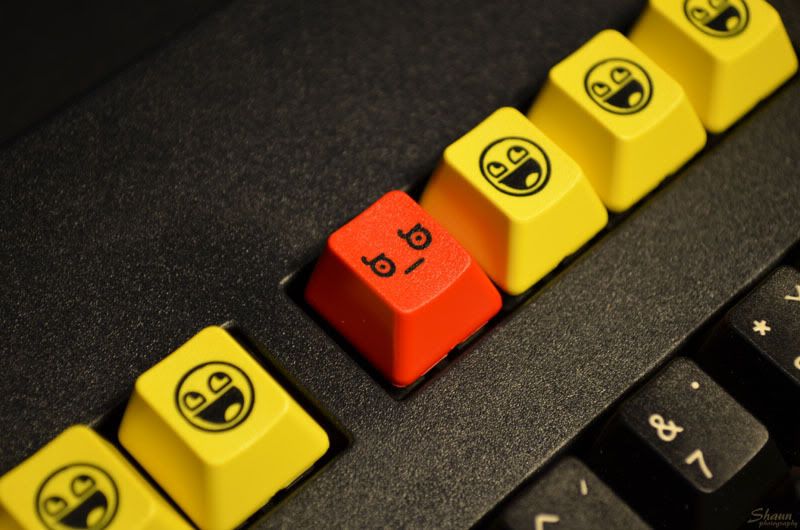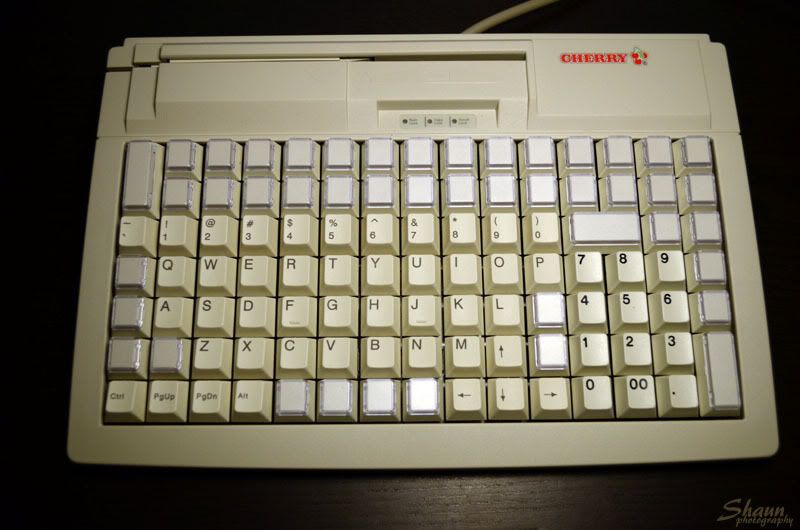QUOTE(Human10 @ Nov 19 2011, 02:48 AM)
Hmm, POM > PBT in term of hardness?

i'm quite butthurt in the moment when he said that.
Rockwell Hardness Scale.
Polybutylene Terephthalate - PBT = M88
Polyoxymethylene (Acetal) - POM = M75
But this cannot be confirm, as multiple site given info are not the same.
http://www.makeitfrom.com/compare/?left=PBT&right=POMsome said, POM are harder than PBT, and some said it's other way around.
Taken From Another Site Regarding to Material Information :
Acrylonitrile Butadiene Styrene (ABS)
» Click to show Spoiler - click again to hide... «
ABS polymers are amorphous polymers readily synthesised by adding styrene and acrylonitrile to a polybutadiene latex. In the resulting polymer, some styrene acrylonitrile (SAN) is grafted on to the polybutadiene backbone chain while the remainder of the SAN forms a continuous matrix. It is the SAN grafted onto the polymer chains that makes the two phases compatible. This essentially gives ABS its strength and toughness. A wide range of ABS materials can be formulated from different combinations of the above three components. It is particularly important to take into account the tendency ABS polymers have to creep, particularly at elevated temperatures. ABS materials also have poor solvent resistance, but they have high impact strength and lend themselves to processing by injection moulding.
Applications of ABS include: computer and household appliance housings, crash helmets and electroplated bathroom furniture.
PBT
» Click to show Spoiler - click again to hide... «
Thermoplastic Polyesters (PET, PBT)
Polyethylene terephthalate (PET) and polybutylene terephthalate (PBT) are the most common thermoplastic polyesters. They are similar to PA6 and PA66 in many respects but with much lower water absorption. However, they are prone to hydrolysis, and prolonged contact with water at temperatures as low as 50°C has a detrimental effect on properties.
PET is used in the manufacture of biaxially oriented film and bottles, the latter suitable for carbonated drinks. The purpose of the orientation is to enhance rigidity, strength and toughness and also to improve barrier properties, which allows thinner bottles to be made.
PBT displays a good combination of stiffness and toughness and can withstand continuous service at 120°C. The most important grades are those reinforced with glass. Applications for PBT include electrical connectors, pump components, and gears, as well as under bonnet and exterior parts for cars.
POM
» Click to show Spoiler - click again to hide... «
These polymers are highly crystalline thermoplastics that are commercially available as homopolymers or copolymers. This crystallinity is responsible for their excellent solvent resistance, fatigue resistance, surface finish and predictable mechanical properties over a wide temperature range. POMs are superior to PAs in stiffness, creep resistance, fatigue strength and water absorption, but have inferior impact and abrasion resistance. In general, the copolymers are thermally more stable, with similar mechanical properties to the homopolymer, albeit with slightly reduced tensile properties.
The greater stiffness and strength of the homopolymer have promoted its use in cams, gears and exterior car door handles. The copolymer is preferred where chemical resistance and resistance to hydrolysis in particular are important. Examples of the applications of POM copolymer are electric kettles, wash basins and shower heads, as well as snap fit components and toys.
Some explain POM are hardest, but it's weak against impact and abrasion resistance compare to PBT, So.. i take this as a win for PBT ?
hence, i don't even know the materials that it used to creating these plastic. formula affects it the quality/stiffness/hardness? hmmm...
This post has been edited by Cyclonechuah: Nov 19 2011, 06:23 AM 


 Nov 12 2011, 07:19 PM
Nov 12 2011, 07:19 PM

 Quote
Quote












 0.0404sec
0.0404sec
 0.59
0.59
 7 queries
7 queries
 GZIP Disabled
GZIP Disabled